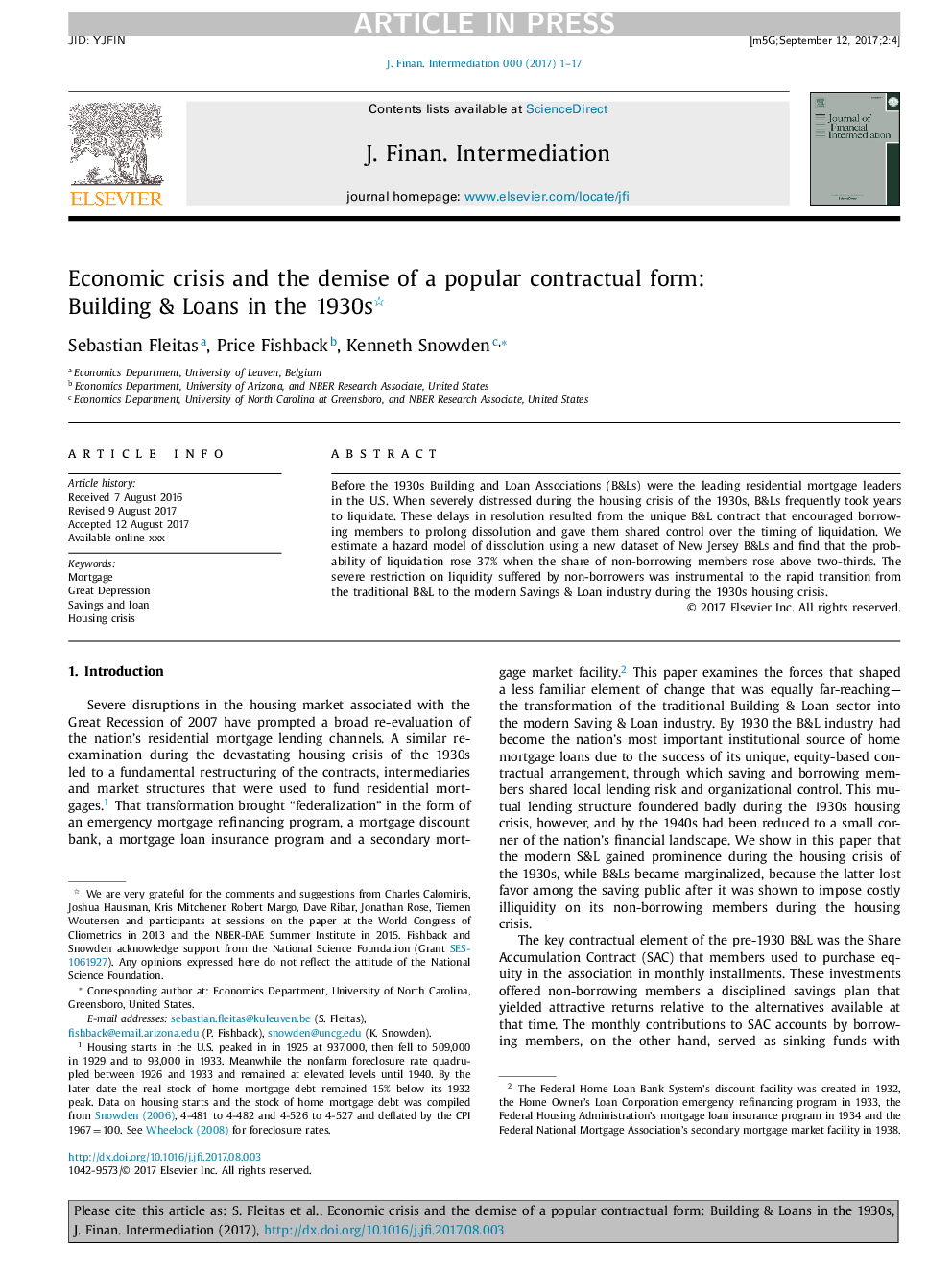| Article ID | Journal | Published Year | Pages | File Type |
|---|---|---|---|---|
| 11020461 | Journal of Financial Intermediation | 2018 | 17 Pages |
Abstract
Before the 1930s Building and Loan Associations (B&Ls) were the leading residential mortgage leaders in the U.S. When severely distressed during the housing crisis of the 1930s, B&Ls frequently took years to liquidate. These delays in resolution resulted from the unique B&L contract that encouraged borrowing members to prolong dissolution and gave them shared control over the timing of liquidation. We estimate a hazard model of dissolution using a new dataset of New Jersey B&Ls and find that the probability of liquidation rose 37% when the share of non-borrowing members rose above two-thirds. The severe restriction on liquidity suffered by non-borrowers was instrumental to the rapid transition from the traditional B&L to the modern Savings & Loan industry during the 1930s housing crisis.
Related Topics
Social Sciences and Humanities
Business, Management and Accounting
Strategy and Management
Authors
Sebastian Fleitas, Price Fishback, Kenneth Snowden,
